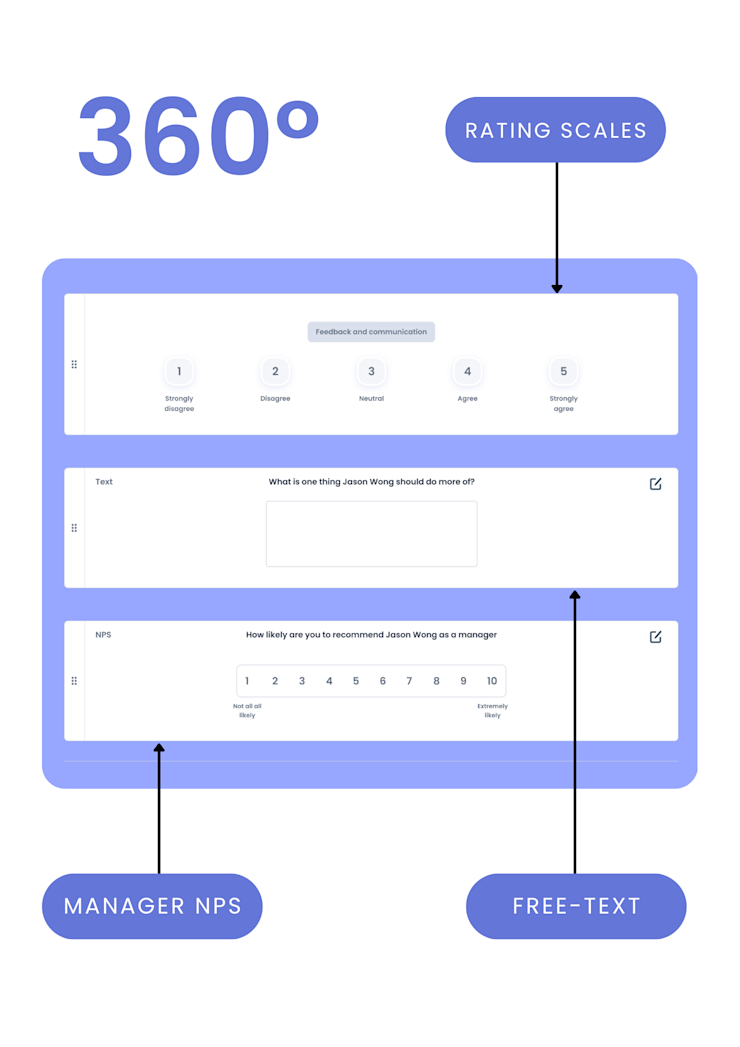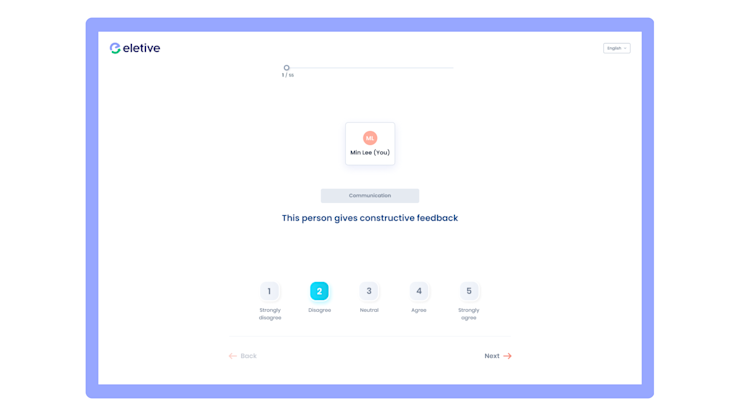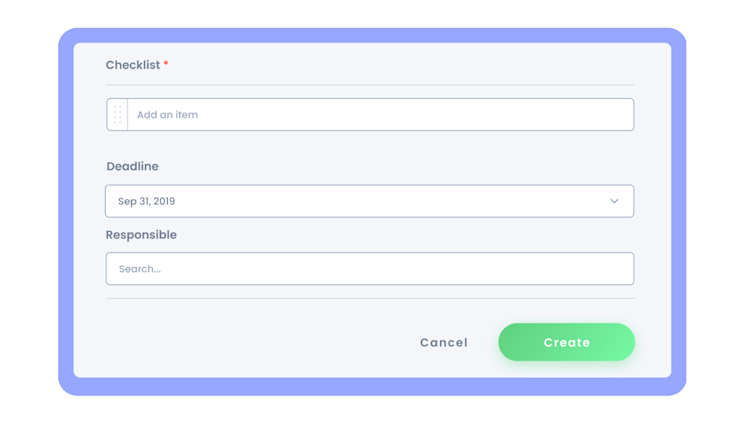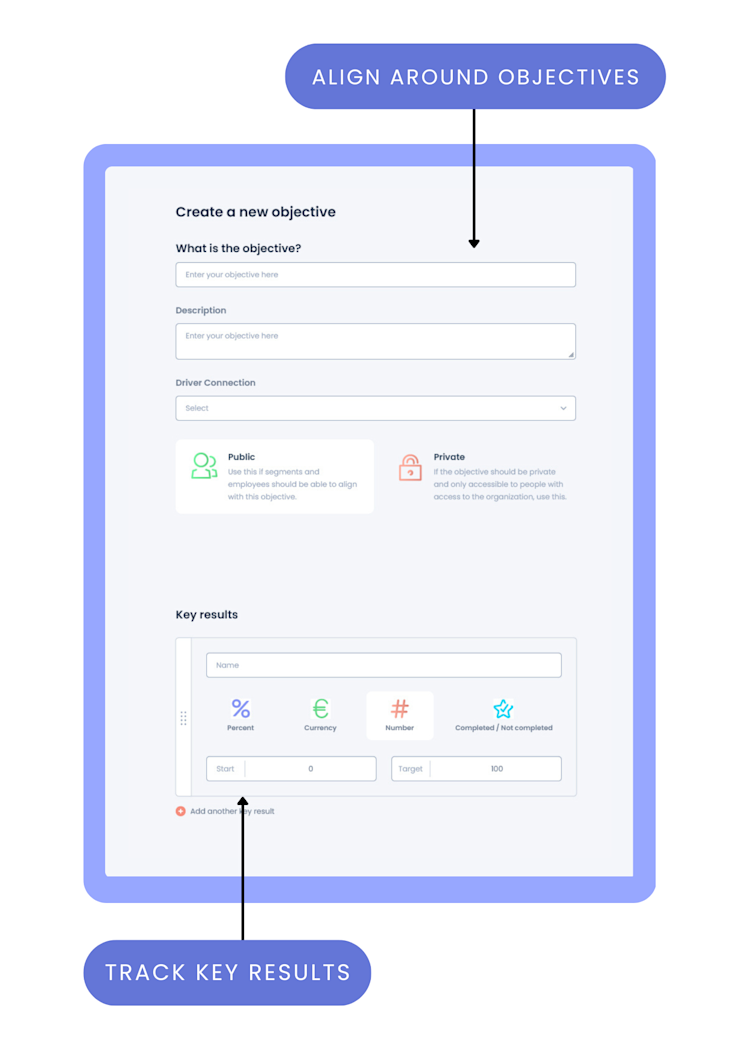In recent years, many businesses have been moving away from the traditional yearly performance appraisal process and towards a more ongoing and agile approach to performance management.
While performance appraisals have long been a staple of the corporate world, they are increasingly being viewed as too static and insufficient on their own. This shift towards ongoing performance management reflects a growing recognition that employees need regular feedback and coaching to develop their skills and achieve their full potential.
In the Harvard Business Review article The performance management revolution, the authors argue that "The annual review’s biggest limitation [...] is its emphasis on holding employees accountable for what they did last year, at the expense of improving performance now and in the future." This is one reason many are moving away from yearly appraisals, towards more-frequent, development-focused conversations between managers and employees. However, there are many ways to approach the performance management review process, and there are no cookie-cutter solutions. To guide you through some of the many popular approached, we’ve assembled a comprehensive list of 17 templates designed with performance management review in mind. But first, let’s take a look at what performance management is and why it’s important.
What is a Performance Management Review?
In essence, a performance management review is an opportunity to evaluate an employee's or manager’s performance. This can be done through assessments from stakeholders, peers, or management. The objective is to determine strengths, opportunities to improve, and to set specific goals.
Performance Management Review Process
The performance management review process is composed of six steps.
Establish performance standards
Communication performance standards
Measure actual performance
Compare performance to standards
Discuss the results and give feedback
Decide on a follow-up action plan
For this process to succeed, clear documentation is essential. And that’s exactly what we’re looking to provide in this article. The following free management performance review templates will help you build a format to measure actual performance and compare that to your established standards.
Performance review vs performance management
Before we dig into the templates, let’s clarify the difference between performance review and management. A performance review focuses on evaluating performance over a given period. This period could be quarterly, annually, and any interval in between. It’s meant to identify performance according to objectives and standards. However, this approach can be one-sided. Performance management, on the other hand, is the proactive approach towards employee performance. It is more than evaluation. It’s about helping employees accomplish goals and improve performance per organisational values. Unlike a strict performance review, management promotes employee engagement and fosters a culture of continuous improvement.
17 Performance Management Review Templates
360-degree feedback forms
Recommended duration: Bi-annually to annually
360-degree feedback is a powerful and comprehensive tool to help managers learn employees’ strengths and weaknesses from all sides. It utilises multiple sources such as manager feedback, peer feedback, and direct reports to help HR identify “blind-spots.”
Begin by identifying your objectives when implementing 360 feedback. Are we looking to monitor and track progress over time? Where is the focus? Once you answer those questions, you’ll need to gather constructive feedback on the review subject from peers, managers, and any other relative parties. Plus, you’ll need to communicate the purpose of the review to everyone involved, ensuring they understand how to give and receive feedback.
Eletive make 360-feedback surveys quick and easy while helping you customise the approach to tailor it to your unique company needs.

Goal setting forms
Recommended duration: bi-annually or annually.
Goal setting, as the name implies, helps employees set well-defined goals that are specific, measurable, and realistic. This ultimately helps reduce misunderstanding and help employees take a clear route to achieve goals. What’s more, goal setting makes performance assessment clear and quantifiable as it creates clear milestones.
For the best results, train employees and managers alike on using effective feedback with SMART goals. From there you will schedule regular check-ins that encourage ongoing communication. When it’s time for the quarterly (or whatever milestone you choose) review, you’ll be able to evaluate and adjust accordingly.
With Eletive, you can use smart goals to ensure everyone in your organisation is moving in the right direction. We offer a solution that allows you to bring smart goals, performance management, and employee engagement into one, unified platform. That gives you a one-stop shop for setting and achieving all of your organisation’s performance goals.
Self-assessment forms
Recommended duration: Quarterly, bi-annually, or annually.
Self-assessments should be a part of every performance review. Self-assessment forms allow employees to evaluate their own performance and identify the areas where they need to improve.
The questions on these forms typically allow them to share what they feel they have achieved and where they’re struggling. This gives a feeling of ownership of their work performance and engages their managers in a dialogue about how they would like to improve. Ultimately, it’s excellent to build employee engagement. Like other assessments, start by determining your goals and designing the assessment questions around them. Then provide them to your employees, ensuring you give them a reasonable window to reflect and complete the form. We suggest at least a week.

Self-assessments are an important part of 360-feedback surveys
Peer review forms
Recommended Duration: bi-annually or annually
Peer review is excellent for encouraging teamwork and collaboration among employees. It gets them involved and working together to work out where they are, and where they need to be. What’s more, having colleagues share their assessment work can provide valuable insight into employees from diverse perspectives. That creates a well-rounded assessment that can tap into information other assessments can’t provide. Of course, first, you’ll want to identify the peer groups. It would be pointless to pair employees that rarely work together. Rather, choose employees that frequently engage whether they work in the same department or otherwise. Then simply give the colleagues time to meet and perform their assessments.
Eletive makes the process of identifying peers quick and easy, and it can even be automated in the platform. If you're looking to send out peer review feedback forms, Eletive's smart algorithm can automatically identify the right respondents based on automated hierarchies.
Behaviour observation scales
Recommended Duration: Quarterly
Behaviour observation scales focus on observable behaviours and skills. Ideally, this means that the assessment will be more objective and less reliant on bias or subjectivity. You’ll also find that this assessment is adept at identifying training needs.
Implementing this assessment in your organisation will require training managers on how to observe and rate employee performance. This observation will take place during specific job-related tasks rather than general behaviour. Following this period of observation, you’ll have a simple sit down with the employee to provide feedback and relevant coaching – highlighting areas where they excel and what needs improvement.
Eletive makes it easy to create action plans, add action points to the one-to-one agendas, and track progress.
Graphic rating scales
Recommended Duration: Quarterly
This popular method of assessment depends on rating attributes on a numeric scale. It allows you to numerically standardise your reviews and grant HR an at-a-glance understanding of where an employee is professionally.
Conducting a graphic rating assessment first requires you to determine the attributes you want to evaluate. This can be creativity, productivity, and any other attribute relative to the role. During this assessment, the manager will mark the scale accordingly under each attribute. To avoid subjectivity, create clear examples of what types of performance earn what ratings.
Graphic rating scales depend on consistency and standardisation to be effective. And you get exactly that when you work through Eletive. We provide a platform that makes it simple to organise performance management on the organisational, segmental, and individual levels.
Checklists
Recommended Duration: quarterly, biannually, or annually.
Checklists provide you with an easily standardised assessment. They measure the same criteria for each employee and allow you to compare that across departments. What’s more, as checklists depend on measurable criteria, tasks become easily quantified.
Checklist assessments themselves can be as easy as marking a milestone as complete or not complete. It’s only a matter of establishing these milestones and other criteria according to organisational goals.
Eletive’s platform helps build checklist assessments by providing you with science-based advice and actions that you can convert to a checklist with just a single click of your mouse.

Critical Incident Technique
Recommended Duration: Ad hoc
CITs involve assessing performance on specific and often complex tasks, focusing on performance in a certain period. As such, they narrow into specific behaviours that contribute either to success or failure. The results will ultimately determine what measure should be taken regarding performance. It’s a razor-sharp tool to address razor-sharp problems.
As the name suggests, you’ll start by identifying a critical incident that needs addressing. This could be a dramatic decline in performance or other notable problems. You’ll follow this by gathering all information you can during the period in question and analysing that data. From there develop an action plan to address any problems uncovered.
Critical incident technique assessments are vital for preventing more serious problems. That’s why Eletive gives you and your managers real-time alerts when employee surveys indicate the immediate need for action on problems such as long-term stress and harassment.

Management by Objectives
Recommended duration: Annually.
Management by objectives is one of the most direct ways to measure and increase performance as it works through setting specific goals. This method is both measurable and motivates employees with a clear outline of what is expected.
Implementing MBOs is equally straightforward. Identify specific objectives you would like employees to meet. Then simply monitor progress over time, providing regular feedback at set intervals.
Eletive provides leaders with tools that make tracking employee progress and aligning objectives to company goals easy.

Ranking method
Recommended Duration: Annually
This method is excellent for identifying your highest-performing employees while finding those who need improvement at the same time. What’s more, you’ll provide those high-performing employees with recognition for their overall efforts. Start by identifying the performance criteria you want to measure by. Sales, for example, are a popular choice. Then choose a time interval and evaluate accordingly. Once the time interval ends, your managers will create a ranked list of employees based on performance. However, it’s important to note here that the ranking method should always be used as part of a comprehensive assessment strategy that includes one-on-ones and 360 feedback. Eletive can help on both fronts, making progress tracking easy and empowering employees with advice based on organisational behavioral management research.
[Insert Template]
Forced choice method
Recommended duration: Annually
This is an assessment method aiming to mitigate bias during the evaluation process. The idea is to eliminate neutral or vague evaluations at the same time by limiting assessment options to two choices.
You’ll start by creating a set of paired statements for evaluating behaviour. Each statement will be tied to an attribute or behaviour. Managers will then simply choose between the two for the statement that resembles the employee the most. The results will then be compiled and used to create feedback for the employee.
Essay method
Recommended duration: Bi-annually or annually.
Essay assessments are best for atypical roles or positions that don’t have non-numerical goals. They provide in-depth, freeform analysis from managers on employee performance. It’ll cover everything that numerical analysis can’t. This method is what we in the HR business call “old school.” On its most basic level, evaluators just need a blank word document, a keyboard, and an understanding of who they’re assessing. But here for the best, up-to-date option. Eletive brings the essay method into this decade by offering sections for shared notes and private notes in the platform, connected to the one-to-one meeting templates and documentation.
Rating scale with comments
Recommended duration: Quarterly or bi-annually
Performing a rating scale assessment with comments joins the power of numerical and freeform methods into a single method. What’s more, they’re easily administered and help differentiate employees’ performance.
As with any other assessment, you’ll start by identifying performance criteria into set categories. Follow that by establishing a numerical rating scale. Your manager will then score employees accordingly alongside a written comment explaining their reasoning with suggestions for improvement.
Narrative method
Recommended duration: Annually or biannually
The narrative method allows reviewers to discuss what they believe to be the most pertinent details about an employee’s performance. What’s more, it gives employees a customized review of their performance. However, narrative appraisals can go off the rails fast without focus or guidelines. As such, each round of reviews needs specific guidelines and goals for the best results. Identify the most important points reviewers need to assess, and set specific style guidelines to maintain consistency.
As this method can easily become subjective, your reviewers need data to back their reviews. Eletive’s platform enables managers to create clear and intuitive reports while automating the most time-consuming tasks such as engagement surveys.
Competency-based evaluations
Recommended duration: Annually.
Competency assessments focus on identifying gaps in job-critical skills. As such, they’re a natural solution to developing action plans that help employees grow in their roles.
Naturally, implementing competency-based evaluations starts by identifying the most job-critical skills. For example, web developers may require specific coding skills. From there you’ll develop a competency framework that outlines the skills in question. Then it’s only a matter of assessing and giving feedback.
Once you’ve identified employee skill gaps, you’re going to need an action plan. Eletive action plans, you can create plans for your entire organisation or segment them according to teams or even on the individual level.
Senior management performance review template
Recommended duration: Biannually to annually
Senior-level assessments help the top-level employees in your company align with organisational goals. This naturally passes down to the employees under them, ideally improving the company’s overall performance as a result. The key to assessing senior management is identifying both competencies and KPIs relevant to their position. From there, conduct 360 feedback assessments that include direct reports and peer reviews. Review this information alongside established organisational goals and objectives.
Environmental management performance review template
Recommended duration: Annually
Environmental management performance reviews work towards ensuring improved sustainability. This ensures organisational alignment on environmental goals from individual employees to stakeholders. Start by identifying goals and use them to develop a set of indicators to measure progress towards said goals. From there conduct a gap analysis to identify opportunities for improvement. This will in turn provide the data to develop an action plan.
How to write a performance review for manager
Line workers aren’t the only ones that need regular feedback. Management needs to know how they’re doing and how they can improve just as much. Writing performance reviews for managers should focus on both performance and constructive feedback. Here are some quick tips.
360-degree feedback - Just as managers need to assess employee performance, employees need to participate in manager assessments.
Use relevant examples - When choosing items for feedback, look for specific events and examples that speak to their performance.
Be objective - An assessment is a sensitive time for anyone. Avoid using judgemental or loaded questions for a fair and unbiased process.
Related reading: 41 performance review phrases for managers, peers & yourself
Make performance management easy and efficient
If you're looking for a structured yet agile approach to improve performance in your organisations, contact us today to schedule a demo. Our engagement specialists will show you how Eletive works, and how a modern platform for employee engagement and performance management will help you reach your goals and objectives.

























